 I went to the The New England School of Architectural Woodworking (NESAW) to attend ShopBot Camp this Saturday and it was awesome! The school is located on the first floor of a converted warehouse/factory building that also houses several artists’ studios. NESAW began as a collaboration between the Division of Continuing Education at the University of Massachusetts, Amherst, and a group of professional woodworkers. Greg Larson, the Director of NESAW, explained that the original mission of the school was to offer adult beginning and intermediate classes in woodworking, but this expanded to include architectural woodworking career training in 1995.
I went to the The New England School of Architectural Woodworking (NESAW) to attend ShopBot Camp this Saturday and it was awesome! The school is located on the first floor of a converted warehouse/factory building that also houses several artists’ studios. NESAW began as a collaboration between the Division of Continuing Education at the University of Massachusetts, Amherst, and a group of professional woodworkers. Greg Larson, the Director of NESAW, explained that the original mission of the school was to offer adult beginning and intermediate classes in woodworking, but this expanded to include architectural woodworking career training in 1995.
You can find a schedule of upcoming camps and online training seminars on ShopBot’s website (link).
There were about 25 attendees and Randy Johnson, Bill Palumbo and Ryan Patterson from ShopBot Tools were present. About a third of the attendees were also teachers so I felt right at home.
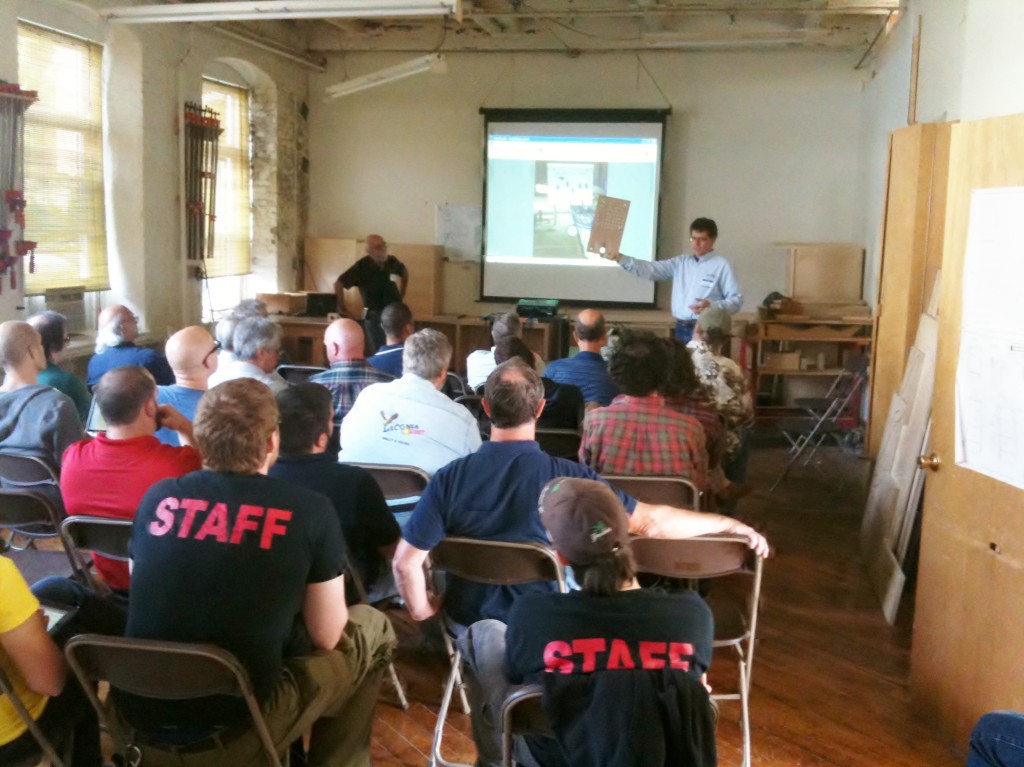 We spent the morning sessions talking about CNC machining and strategies for securing our workpieces during machining; there was a lot of interest on vacuum hold down systems. We discussed different plenum designs (i.e. hollow structures from which air can be evacuated) and different sources of vacuum. ShopBot has published a nice document describing vacuum hold down systems that is available as a PDF.
We spent the morning sessions talking about CNC machining and strategies for securing our workpieces during machining; there was a lot of interest on vacuum hold down systems. We discussed different plenum designs (i.e. hollow structures from which air can be evacuated) and different sources of vacuum. ShopBot has published a nice document describing vacuum hold down systems that is available as a PDF.
We also examined some interesting vacuum puck systems made from non-porous plastic blocks that can easily be screwed down to the spoil board of a machine. Due to their small size, the plenums of the vacuum pucks we examined could be evacuated using small laboratory pumps available from Gast or Harborfreight…oil-less pumps are preferred to avoid smoke in the pump exhaust. You will need to gasket the edges of the puck to create a good seal against your workpiece.
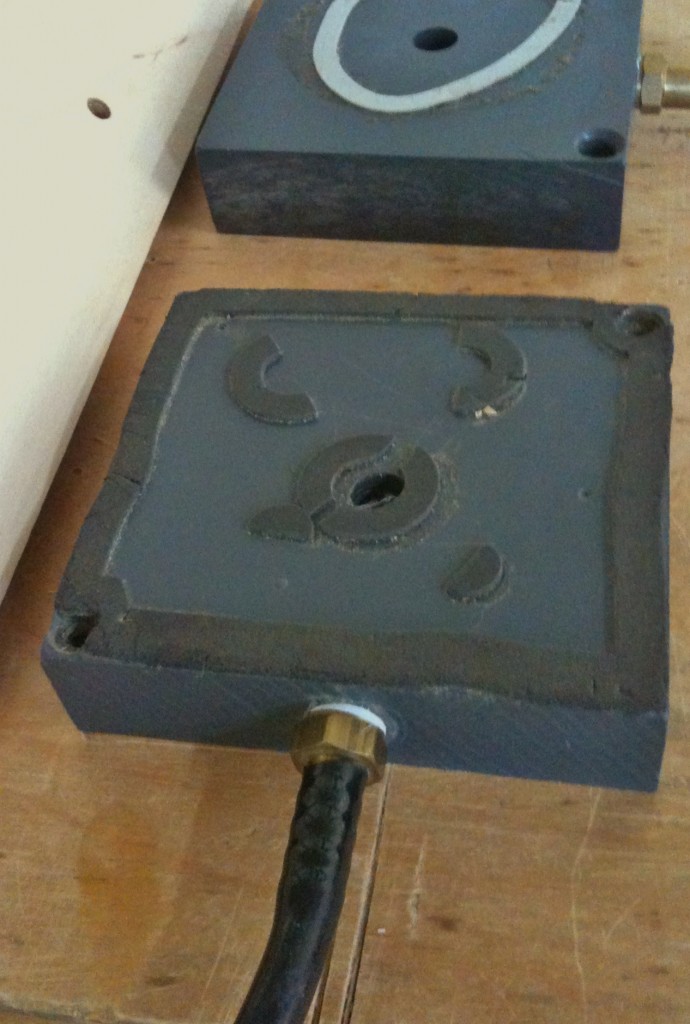
All Star Adhesives was mentioned as a excellent supplier of gasket material for sealing vacuum systems.
After the morning classroom session we went up to Mason Rapaport’s studio on the fourth floor of the building to examine the multi-zone vacuum hold down system he developed for his full sized PRSalpha machine.

A photo showing the plenum (stained yellow) and the naturally porous MDF sheet on top for use as a spoil board. I was very surprised at how easily air seems to pass through MDF! We saw that panels placed on the machine table were held securely in place by vacuum pressure even though there were no holes drilled through the MDF spoil board to provide a direct pathway to the plenum; Mason’s system is extremely efficient and he is able to create a vacuum that measures in the range of 10 inches of mercury (if I remember correctly). Using a conversion of 1 inch of mercury as being equivalent to 0.5 pounds per square inch (psi) of pressure, then Mason’s vacuum system has the potential to create a total clamp force greater than 20,000 pounds on a 48″x96″ panel!

A closer look at the plenum, gaskets and a Z-zero plate permanently affixed to the machine frame…

Ryan from ShopBot helped introduce some of the features and capabilities of the PRSalpha machine…
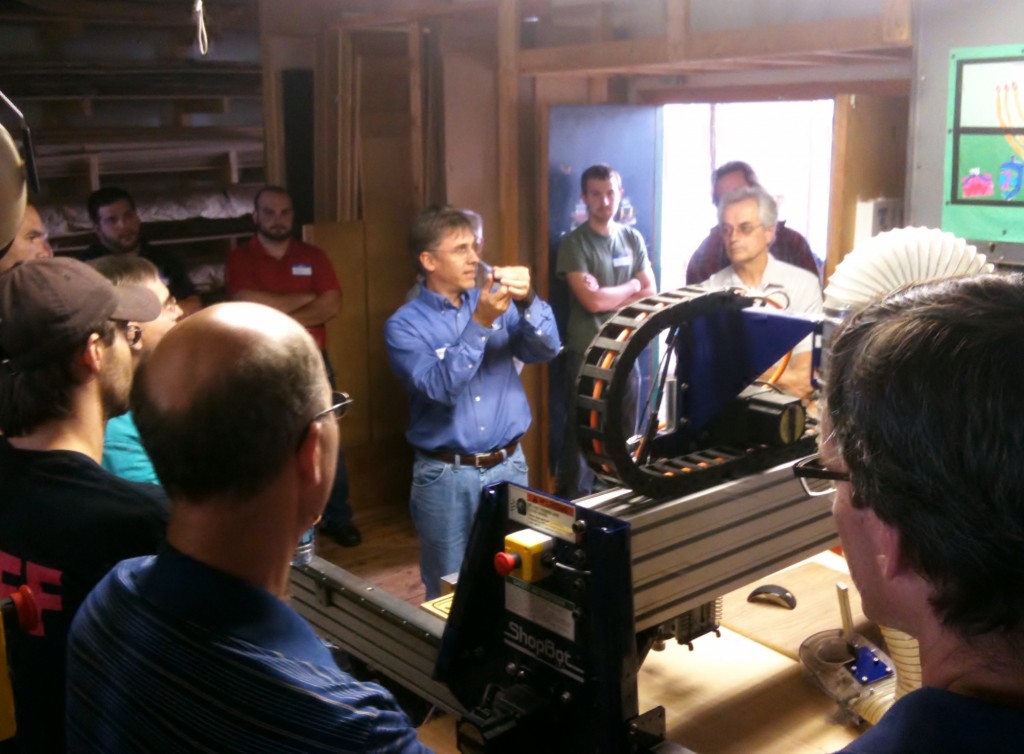
After looking over the Mason’s machine we headed back downstairs to share some ideas with each over delicious pizza.

While walking around the displays, I noticed some really interesting examples of inlaid wood created with a ShopBot CNC machine…
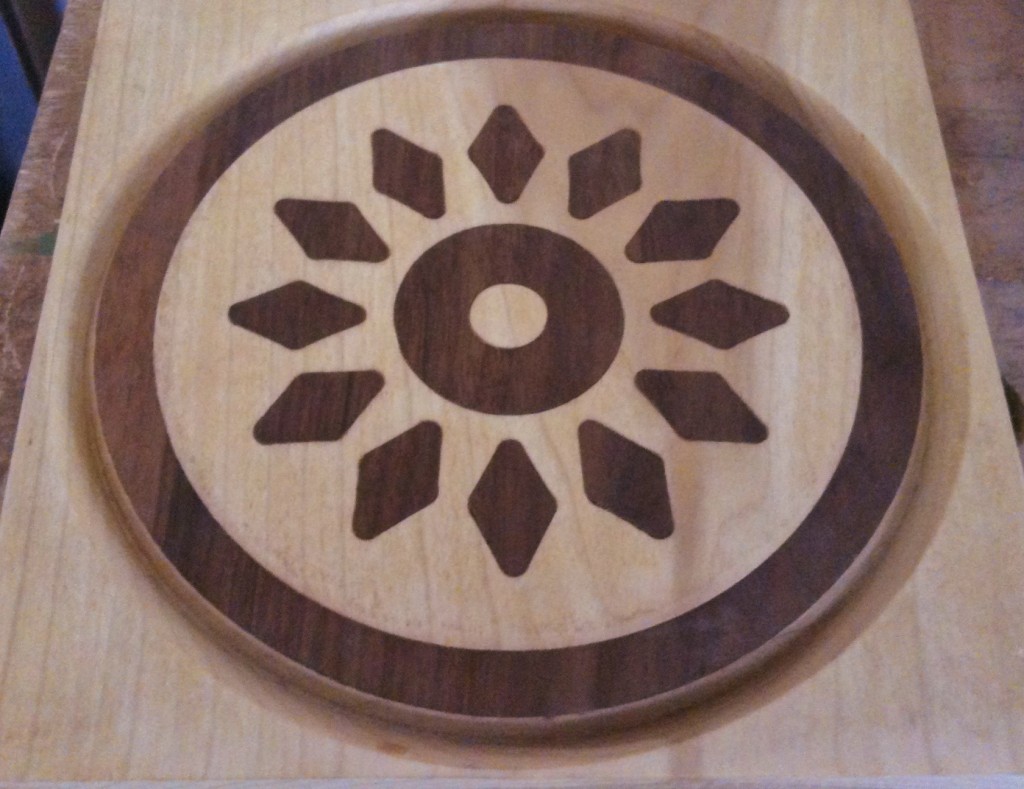
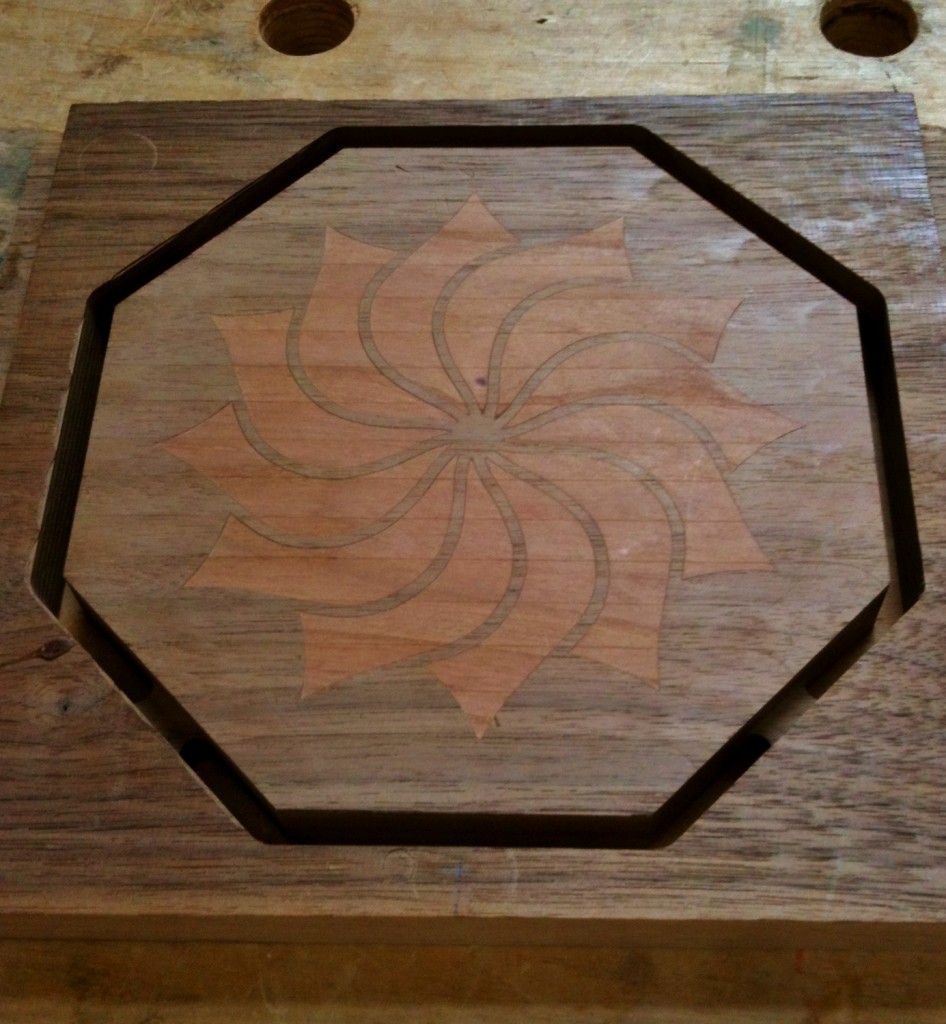
I also noticed a nifty snap-together wooden box…



Some 3-D texture carving on spherical surfaces…

A prototype HandiBot set-up with a 4th axis rack and pinion gear to machine stair stringers…

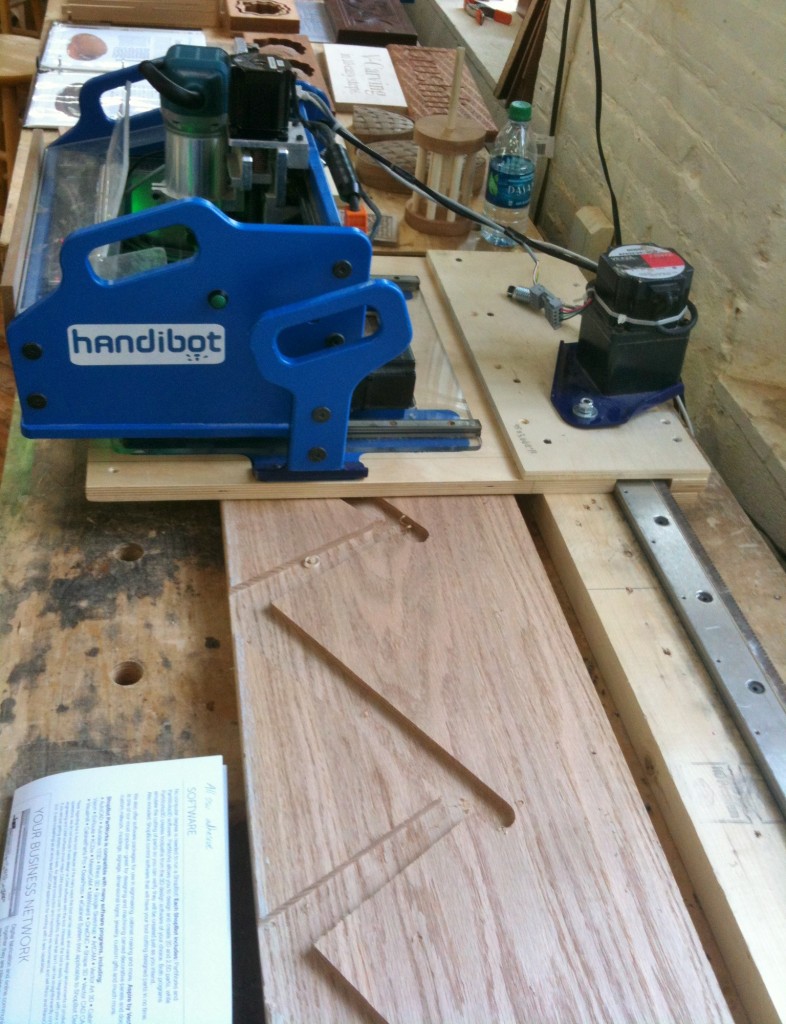
And a ShopBot Desktop set-up to v-carve signs…

Ryan used the afternoon class session to discuss machine cutting parameters which I was unfortunately unable to attend since I needed to return to New York City for an event sponsored by Math for America.
Our hosts did a great job with this training session and I came away from it feeling much more informed.
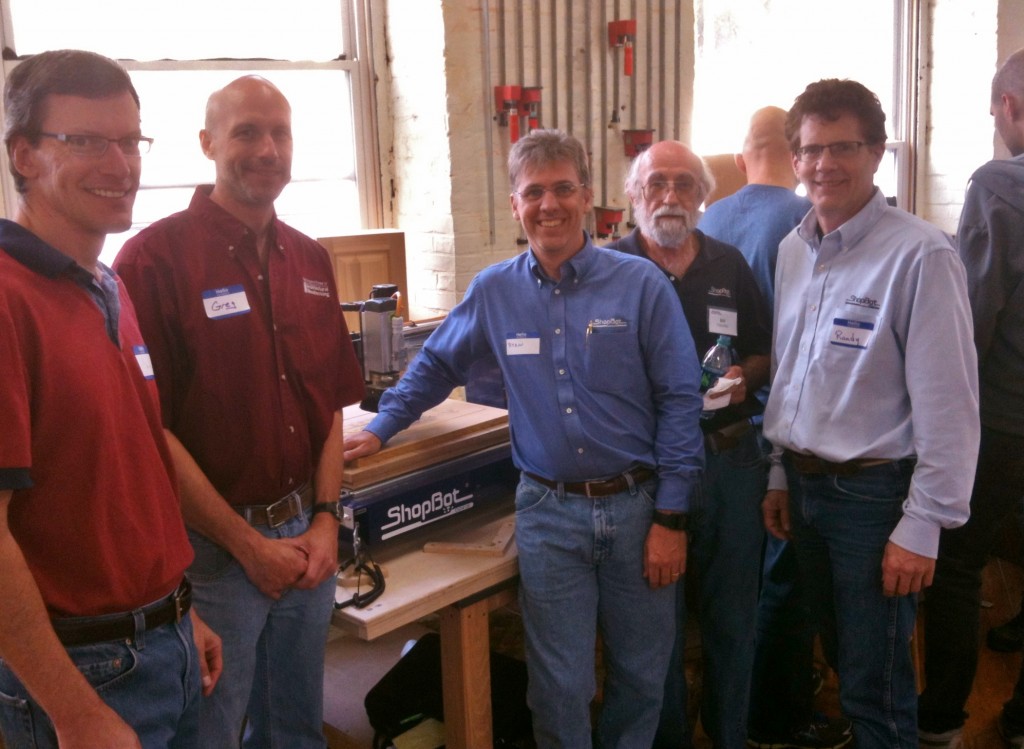
I think that one of my future projects will be to create a few simple vacuum pucks to help me hold down materials in my ShopBot Desktop… let me know if you have any tips!
All the best,
Jack
Do you think a vacuum clamp system would work on the desktop? I would love to develop something like this but with the limited Z access this machine has there would not be much room left….did they suggest anything there?
Ed Birkey
Hi Ed, I think a vacuum system is very feasible for the ShopBot Desktop but I have not seen a design for one yet and I haven’t made the time to design one myself…I don’t think that it would be too difficult. I think that I’m going to try making some vacuum pucks that I can just screw down to the spoilboard first. The pucks we looked at were about 1″ thick and were made of some scrap plastic so you don’t lose too much z-travel; I’ve been carving mostly flat designs so far. Pucks can also be put together arrays to handle bigger jobs.
Bill mentioned that the plenum material you use should be non-porous…buy the best quality plywood you can find and then seal it to close up any porosities. I was thinking of developing something when it comes time to replace my spoilboard.